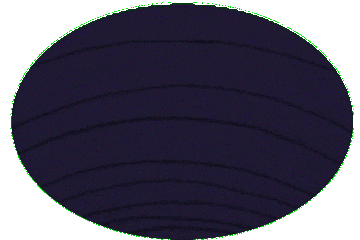Wright Brothers
The Wright brothers, Orville Wright (August 19, 1871 – January 30, 1948) and Wilbur Wright (April 16, 1867 – May 30, 1912), were American aviation pioneers generally credited with inventing, building, and flying the world's first successful airplane. They made the first controlled, sustained flight of an engine-powered, heavier-than-air aircraft with the Wright Flyer on December 17, 1903, four miles (6 km) south of Kitty Hawk, North Carolina, at what is now known as Kill Devil Hills. In 1904 the Wright brothers developed the Wright Flyer II, which made longer-duration flights including the first circle, followed in 1905 by the first truly practical fixed-wing aircraft, the Wright Flyer III. The brothers' breakthrough invention was their creation of a three-axis control system, which enabled the pilot to steer the aircraft effectively and to maintain its equilibrium. Their system of aircraft controls made fixed-wing powered flight possible and remains standard on airplanes of all kinds. Their first U.S. patent, written in March of 1903, before their first flight at Kitty Hawk, did not claim invention of a flying machine, but rather a system of aerodynamic control that manipulated a flying machine's surfaces. From the beginning of their aeronautical work, Wilbur and Orville focused on developing a reliable method of pilot control as the key to solving "the flying problem". This approach differed significantly from other experimenters of the time who put more emphasis on developing powerful engines. Using a small home-built wind tunnel, the Wrights also collected more accurate data than any before, enabling them to design more efficient wings and propellers. The brothers gained the mechanical skills essential to their success by working for years in their Dayton, Ohio-based shop with printing presses, bicycles, motors, and other machinery. Their work with bicycles, in particular, influenced their belief that an unstable vehicle such as a flying machine could be controlled and balanced with practice. This was a trend, as many other aviation pioneers were also dedicated cyclists and involved in the bicycle business in various ways. From 1900 until their first powered flights in late 1903, the brothers conducted extensive glider tests that also developed their skills as pilots. Their shop mechanic Charles Taylor became an important part of the team, building their first airplane engine in close collaboration with the brothers. The Wright brothers' status as inventors of the airplane has been subject to numerous counter-claims. Much controversy persists over the many competing claims of early aviators. Edward Roach, historian for the Dayton Aviation Heritage National Historical Park, argues that the Wrights were excellent self-taught engineers who could run a small company well, but did not have the business skills or temperament necessary to dominate the rapidly growing aviation industry at the time.
This article uses material from the Wikipedia article "Wright brothers", which is released under the Creative Commons Attribution-Share-Alike License 3.0.
References
| Title | Summary | |
|---|---|---|
| Notes on Nilsson: The Life of a Singer-Songwriter by Alyn Shipton | ... So too would mentions of the Wright Brothers musical. ... | |
| How Wright You Are | ... musical he conceived about the Wright Brothers . To ... | |
Connection Chains
- From Sully Sullenberger to Wright Brothers in 4 Steps
- From US Airways Flight 1549 to Wright Brothers in 3 Steps
- From David Sontag to Wright Brothers in 2 Steps
Connections
- How Wright You Are is a musical about the Wright Brothers
- The Wright Brothers are the subject of How Wright You Are












